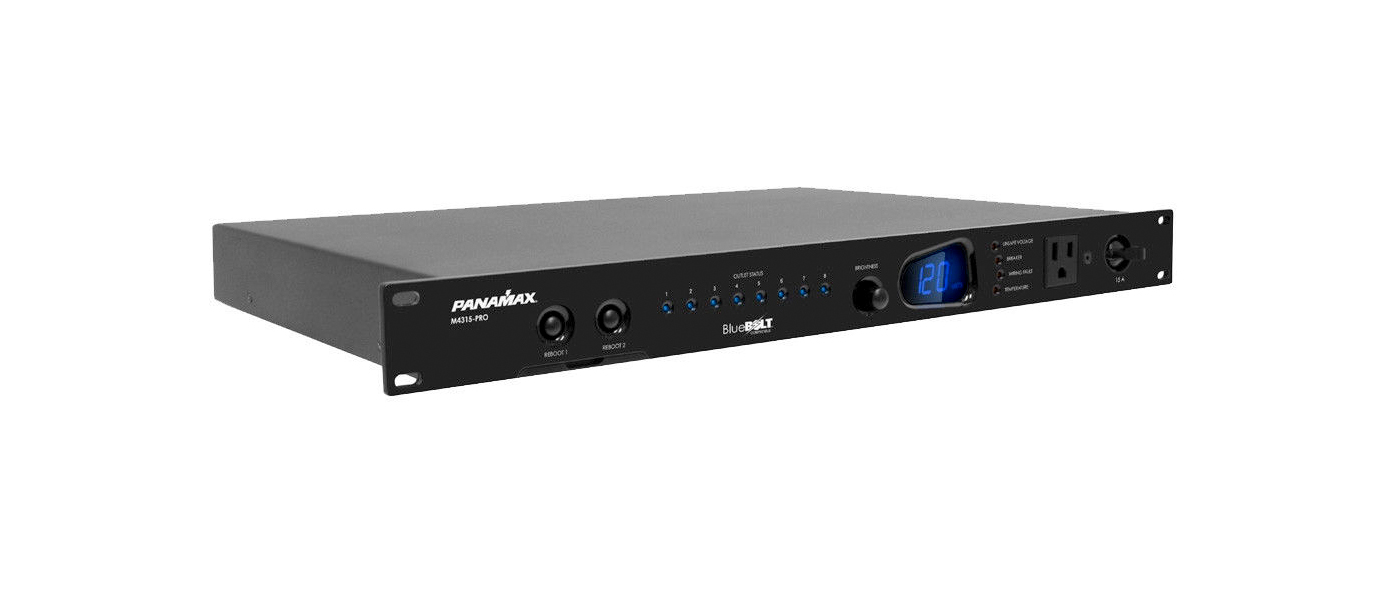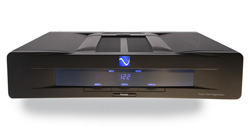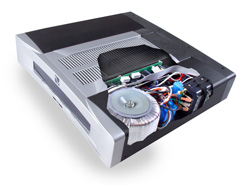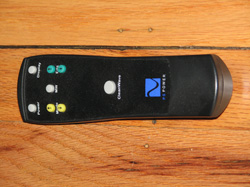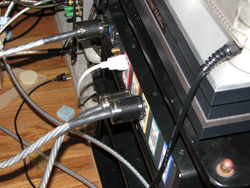Introduction
The PS Audio Power Plant Premier (PPP), the company’s latest version of the Power Plant P300 that company head Paul McGowan first introduced in 1997, is a true power regenerator. The PPP takes “dirty” and variable AC power from the wall socket, converts it to DC voltage, and then regenerates a new AC sine wave signal at 120 volts. It also serves as a surge protector and all-around power distribution system.
Given my long history with PS Audio’s Power Plant power regenerators, it comes as no surprise that I would want to review the PPP. I began using the original P300 shortly after it was released. Although it was not a perfect unit, I found myself bearing with its fan noise, current-sucking inefficiency, and frustratingly imperfect MultiWave settings in exchange for the vast improvement it made to the sound of my system. (MultiWave is claimed to extend the peak charging time of the sine wave to help connected equipment lower power supply ripple and therefore improve performance.)
Then, when the P300 could not adequately power my amplifier plus two active subs, I moved up to the P600, issued in 1998. I again appreciated the major sonic improvements and increased current handling capacity, but there was no getting around the fact that the P600 was a back breaking brute of a unit that was difficult to move from place to place, It also burned electricity as though it was Manna from heaven.
Although somewhere along the line a beta test Power Plant blew up on me, my P600 sent flames and acrid smoke into the air after a crucial insulating washer gave up the ghost, and the P600’s brightly blue-lit PS Audio logo made listening in the dark impossible until I unscrewed the bulb, I stuck with my P600 for a long time because it sounded so good. Only when the Nordost Thor power distributor entered my life did I part company with the P600 and the large electric bills and heat that were an unavoidable consequence of keeping it on 24-hours a day.
Other PS Audio power products have also had their say at Casa Bellecci-Serinus. The original PS Audio Ultimate Outlet (2001) is currently hard-wired to my dedicated line, and remains an alternative to my two in-wall PS Audio Power Port outlets. I’ve also used one of the company’s original power cords, and, at a Bay Area Audiophile Society (BAAS) demo, the original Juicebar eight-outlet extension strip (2001). (Thanks for the gracious short-term loan, Paul). I also reviewed the PS Audio GCA 250 Class D amplifier. The excellent PS Audio Perfect Wave Transport, which is in some ways a breakthrough product, currently serves as my reference transport.
When I contacted Paul for a PPP review unit, I told him that I use prototype versions of VTL’s 450W Series 2 monoblock amplifiers. Because these wonderful sounding amps consume far more power than they produce, Paul said that one Power Plant Premier (PPP) could not adequately power my two monoblocks, transport, Theta Gen. VIII Series 2 DAC/preamp, Clearaudio turntable, Classe 6 phono preamp, and MacBook Pro. Hence he sent me two Power Plant Premier review units, one for each channel. (My complete reference system, including room dimensions, is appended to the end of this review).
I also confess to a secret motive for requesting the PPP. Reviewing the unit gives me the excuse to communicate with Paul McGowan, who is among the sweetest men in the business. I love chatting with him, and looked forward to excuses to stay in contact beyond our usual meetings at shows.
Technical Specifications
- Design: AC Power Conditioner (Reconstructs 60 Hz Sine Wave)
- Output: 1,200 Watts
- Regulation: ±0.5V
- Distortion: <0.9% at Full Output
- Noise Reduction: 80 dB from 100 kHz – 2 MHz
- Output Impedance: 0.015 Ohm
- Dimensions: 4” H x 17” W x 16.5” D
- Weight: 35 Pounds
- MSRP: $1,699 USA
- PS Audio
Design
Many factors tempted me to try the Power Plant Premier. Not only does it promise to achieve far more of Paul McGowan’s original intention, which is to regenerate clean power and improve sound, but it also boasts 85% efficiency with little distortion or noise.
Most important, the unit can produce up to 1500 watts of regulated power without overloading. Because the PPP lowers distortion by 10 times, and generates ultra low output impedance, it promises better bass reproduction. Furthermore, to quote from PS Audio’s website, up to its rated power of 1500W, the PPP has “excess energy storage on board (50 amps vs. the 15 or 20 available from the wall socket) that increases the instantaneous power available to your equipment and maintains a steady regulated voltage.”
The PPP also has ten outlets, organized into five color-coded AC duplex IsoZones that prevent contamination between duplexes. The IsoZones are further organized into power zones that are switchable between always on, switched on, or delayed on. Everything is eminently sensible, and designed for easy, hassle-free operation.
The unit also features new meters that measure the difference between what is coming out of the wall and what the Power Plant Premier is supplying, and also measure THD. Its easily activated CleanWave demagnetization tones, which do not play through speakers, are said to improve sound. Instead of a plethora of MultiWave settings, the PPP’s single, no-hassle choice between regenerated Sine Wave and MultiWave settings makes things simple. There’s also a blue-lit control panel that can be dimmed or shut off, and a handy remote control to engage CleanWave, MultiWave, and panel dimming functions.
One major difference between the Power Plant Premier and earlier models is that the Power Plant Premier does not output balanced power. When I questioned Paul about this, he emailed the following unedited explanation:
“The only advantage of delivering balanced power is the potential noise reduction you get in the equipment being driven – but in a sense, that’s a bit misleading. Let me explain.
“When you send a balanced AC signal, the incoming transformer is driven in balanced mode. What this allows is for common mode rejection of up to 10dB of any noise on the power cable between the Power Plant and the unit being driven. While this sounds good, the truth is if you use a shielded power cable – there isn’t any noise to be lowered and the balanced power is then useless.
“Many people mistakenly think that balanced power lowers noise in the system (it does not), lowers noise in the unit being driven (it does not), and lowers noise in the Power Plant (it does not). All it can do is lower any noises in the power cable between the PPP and the unit being driven.
“Since balanced power isn’t really that effective at lowering noise, we found it advantageous to eliminate it in favor of efficiency. One of the reasons the new PPP is 85% efficient – relative to the 48% efficiency of the older Power Plants – is the use of single ended power rather than balanced. Considering the major benefits of driving your whole system with perfected power vs. just some of the system – or, in some cases – having a much more powerful lower impedance Power Plant like the Premier – sonically it makes all the difference in the world.
“So summing up – we traded balanced power for efficiency knowing that the only downside is that one has to use a decent well shielded power cable to feed their equipment. Since you should be doing that anyway, there’s really no downside at all.”
Setup
Because there is not adequate room for both Power Plants on my main rack, I put the Power Plant Premiers on my two far more decorative than functional side racks. To isolate them from vibration, and enhance their performance, I placed Ganymede Ball Bearing supports under each. Each Power Plant Premier received power from a 2m Nordost Odin power cable. The Odins were in turn plugged into my dedicated 30 amp line.
In Use
While this review mainly concerns itself with audio, I have used both the Power Plant P600 and somewhat similar ExactPower EP15A on my TV and video equipment. Both units render colors more vibrant and pictures more three-dimensional. The Power Plant does the same for the colors on my computer monitor. I feel safe in saying that the Power Plant Premier can only improve the visual aspects of home theater.
When I connected the two PPPs to my downstairs reference audio system, it was initially difficult to pin down their sound. Although PS Audio ran the units for several hundred hours before sending them to me, the PPP needs to be plugged in a good two weeks to sound its best. As long as it is plugged into the wall, and the main switch on the back is in on position, it is warming up and settling in.
In order to hone in on the sound, I also found it necessary to fine-tune my system with the help of four Shakti Hallographs and the Synergistic Research Acoustic ART system room tuning products (see complete review of ART in the Secrets archives). Both products may cause some people to go ballistic, but every single person who has heard them in my room (and that’s a lot of people) has remarked on the improvement they make to image focus and depth, as well as to the overall control and sonic realism.
Some of the people who have commented on the effects of the Hallographs at Casa Bellecci-Serinus include Prof. Keith O. Johnson of Reference Recordings and Spectral, Allen Perkins and Brian Daley of Immedia, and Roy Gregory, former editor of HiFi+. Ted Denney’s two demonstrations of ART for the Bay Area Audiophile Society were quite convincing. Stereophile’s John Atkinson, who is not usually receptive to such devices, has also twice commented in show blogs on the positive effects of ART. None of these people’s considerable credentials is going to sway any sceptic who would rather judge in absentia than bother to listen, but that’s just the way life is.
Once the Hallographs and ART system were optimally positioned, I found the sound of the Power Plant Premier exceptionally rewarding in several respects.
I immediately noticed what it does to the bass. Playing four extremely different recordings – Björk’s latest sonic tour de force for Nonesuch, Live from the Volta Tour; Reference Recordings’ consistently praised issue of Rachmaninoff’s Symphonic Dances, conducted by Eiji Oue; the Royal Concertgebouw Orchestra’s hybrid SACD of Richard Strauss’ Alpine Symphony, conducted by Mariss Jansons, which I awarded a Record-To-Die-For in Stereophile; and a much less acoustically complex recording, Christina Courtin’s eponymously titled debut album on Nonesuch – I became immediately aware of tighter, stronger bass and far more defined pitches. The volume and dynamics of the bass were more balanced with the levels of midrange and treble, and thus more naturally reproduced.
The improvement in bass was especially evident at the beginning of the Alpine Symphony, in which a host of double basses and horns play close-together lines with increasing volume. This music is about a glorious sunrise in the Alps, not a mud bath at a mountainous resort. The Power Plant Premier delivered every line with estimable clarity.
Similarly, on such Björk tracks as “Innocence” and “All is Full of Love,” the slam of percussion was stronger, tighter, and all the more gripping. Björk’s low-frequency electronics produce gonad-gripping stuff, and the Power Plant Premier made the impact all the more visceral. It was impossible not to be impressed. I can say unequivocally that the Power Plant Premier, working synergistically with the Hallographs, ART system, Bybee Golden Godess Speaker Bullets, and Nordost Odin cabling, produced some of the strongest, tightest, best defined, and musical bass I’ve ever heard from my system.
I also became aware of an extra quietness in the presentation. The cymbals and horns at the start of a recording as truthful as Symphonic Dances can sometimes sound equally dazzling and clattery. Here, the clatter was gone, and the silences between instruments more thoroughly defined.
The extra quiet was confirmed by the readings on the Power Plant’s display, which indicated a 4.7% decrease in Total Harmonic Distortion (THD). Although the displays on the two Power Plants tended to differ – if one said it produced 117 volts, the other said 116 – the difference remained relatively constant for both units.
Enter MultiWave
Accessed from the remote control, MultiWave is claimed to “extend the peak charging time of the sine wave to help connected equipment lower power supply ripple and therefore improve performance.” According to the owner manual, “MultiWave can have the same improvement gained from adding a larger power transformer or more power supply capacitance to connected equipment.”
While MultiWave is not recommended for equipment with AC motors, e.g. turntables, it presented no challenge to my amplifiers, DAC/preamp, or transport. With MultiWave engaged, there was a noticeable increase in depth of soundstage and roundness of images. I didn’t necessarily feel that it increased bass, but it certainly helped further define bass lines and make the presentation more three-dimensional. If I didn’t switch back and forth as many times as there are stars in the skies, I certainly performed enough comparisons to convince me, without question, that MultiWave is a major asset. I love it.
Anyone familiar with my reviews knows that I listen with an extremely critical ear. As a music critic, I receive prime seats in every venue I attend. I’ve learned the difference in sound between different rows and sections of San Francisco’s Davies Symphony Hall; the front, back, and sides of the War Memorial Opera House on different levels; Hertz Hall in Berkeley (quite good in front); Herbst Theatre in San Francisco (very dry, awful for orchestral music, disastrous for flute); Oakland’s Paramount Theater (extremely dry, colorless, and wiry-sounding, most bearable in the lower balcony); Zellerbach Hall (best up close); and First Congregational Church in Berkeley (best downstairs, 6 or 7 rows back, where the sound is very clear and direct without the smudge that comes from the excessive reverberation that muddies things up farther back).
I often return from acoustic concerts to play CDs and SACDs recorded in the same venue I left in order to further understand how my system and the recording process alter the sound of the live event. While I expect that other critics do this as well, I often lament that observations about naturally recorded acoustic performances are missing from many reviews. Most pop recordings are so heavily compressed these days that all you can tell for certain is how much of the limited dynamic range and noise get through.
Keeping in mind the sound I most enjoy, I noted that the triangle on Symphonic Dances did not float as much as before. Nor did the cymbals, harpsichord-like sounds, and tinkly instruments on Bjork’s “All is Full of Love” dangle and jangle as much in space. The thumb piano on Christina Courtin’s “Green Jay,” and the leading edge of percussion on her “Foreign Country,” were also smoothed over a bit.
On the other hand, the overall presentation was marvelous. There was more bass that was tighter, more clearly focused, and noticeably better-defined in pitch. There was also less clatter, greater depth, and an estimable silence in the space between notes. The seductive smoothness of the Power Plant’s sound, and its warmth of the presentation, were hard to resist.
After listening to the PPP for many months, I scanned a host of reviews from other critics. The review that seems most to reinforce my observations is by the estimable Roy Gregory, and is accessible via PS Audio’s website. What I find most interesting is that Roy also listened to Rachmaninoff’s Symphonic Dances before drawing conclusions about the Power Plant Premier.
Roy’s review includes the following: “That sweeping sense of grandeur makes for compelling listening, but does come at some cost. The same presence and body that picks out those impromptu backing lines on the [other conditioner] and fleshes them out into a real person, singing along, the sheer body and towering presence that makes the Rachmaninoff such a powerful musical statement – those things rob the music too, of some inner detail and micro-dynamic agility. It’s the age-old conundrum; are you more interested in what’s being played or how the player’s playing it? The PPP stands squarely in the former camp, its innate sense of overarching musical coherence and flow making for an emotionally involving listening experience. It’s unforced and unhurried, bringing natural perspectives and a natural sense of pace to proceedings. It delivers a holistic picture and one that’s both impressive and satisfying without having to resort to being too obvious. As a result, long term listening is a joyfully strain-free experience.”
The Sound on my Upstairs Computer System
As much as I love the sound of my desktop system, which uses the Benchmark DAC1 USB (see review in archives) as the intermediary between an Intel Core 2 Duo iMac and Dynaudio’s excellent Focus 110A self-powered speakers (review forthcoming), I have often noted that its highs can be a bit much. Knowing the quality of my components and cables, I am certain that fault clearly rests with the dirty power that comes from the wall via the multi-outlet surge protector that is plugged into a standard, ungrounded wall outlet.
Although there’s not much I can do about the lack of dedicated, grounded power line for our upstairs, nor the distance from computer system to the wall, I can certainly do something to clean the power.
Enter the PPP. Now situated under my desk, resting on Ganymede ball bearing supports, the PPP’s sonic improvements are impossible to miss. Edgy highs are smoothed out, ring and clatter have replaced by silence, and the presentation is far more engaging. (I expect depth is better, but it’s hard to judge depth and air when you’re as close to the speakers as I).
Rather than provide another host of examples, suffice it to say that I love what the PPP does to my upstairs system. It makes listening to and reviewing recordings – especially computer downloads – far more enjoyable, reliable, and rewarding.
Since I also transport this system to my class, “Vocal Music that Touches the Heart,” and use it to play recordings of many of the finest classical vocal artists on disc, I am hoping to continue using the PPP in the future. Given how much better the system sounds, lugging an extra 35 lbs. up and down the stairs and transporting the unit from Oakland to Berkeley is worth it.
Meltdown
As I was preparing this review, I walked downstairs one afternoon to discover one of the PPPs clicking every few seconds, and the numbers on the display shifting back and forth. I tried to turn the unit off, but would not shut off. Fearing a repeat of the light show explosion that sent my P600 back to the factory for repairs, I quickly unplugged the unit.
The next day, while speaking with Paul McGowan by phone, I tried powering the PPP back up. The clicking resumed. Hence Paul decided to exchange the malfunctioning unit for a new one.
Paul’s son, Scott McGowan, soon provided the following explanation for what had gone wrong: “The clicking you were hearing is the Premier Regenerator relay opening and closing, alternately passing regenerated power and then passing direct wall-power. The relay is in place to allow the Premier to go into protection mode, which would only be one click, but if the microprocessor takes a large voltage spike it will confuse itself, and start opening & closing in and out of protection mode until the Premier is either reset or the Power Cartridge replaced.”
According to Scott, Paul, and Dave Krakenmeister, the PPP’s board is now upgraded and more robust to prevent this relay malfunction from happening in the future.
Conclusions
The PS Power Plant Premier does all it claims to do. A vast improvement on the original Power Plant P300, a single unit can regenerate sufficient power for all but the most current-guzzling amplifiers. It also does so without grossly inflating your electric bill or toasting your room.
Those who think power conditioning and power regeneration units are frill tweaks will have to perform a major mindset adjustment after hearing the Power Plant Premier. It will transform the sound of your audio system, and vastly improve the color and clarity of visuals. What the Power Plant Premier does for bass alone will convince the majority of Secrets readers to give it a serious audition. That, and the under $2000 price, warrant a strong recommendation.
Main Room Reference System
- Digital Front End:
- PS Audio PerfectWave CD/DVD transport
- Theta Gen VIII Series 2 DAC/Preamp
- Bel Canto 24/96 USB link
- Amplification:
- VTL 450W tube monoblock prototypes with KT-88 tubes
- Loudspeakers:
- Talon Khorus X speakers MK. IV with Bybee Quantum Noise Purifiers
- Four Bybee Golden Goddess Super Effect Speaker Bullets, two on each speaker
- Cabling:
- Nordost Odin, Nordost Valhalla, Kimber, WireWorld
- Kimber D60 BNC cable
- Power:
- Nordost Thor Power Distribution System
- PS Audio Power Plant Premier
- IsoClean or other audiophile grade fuses in most components
- Dedicated line for system
- Analog:
- Clearaudio Emotion turntable with Satisfy arm
- Soundsmith “The Voice” phono cartridge
- Benz MC-Gold phono cartridge
- Classe 6 phono preamp with better umbilical cord
- Symposium Platform under turntable


